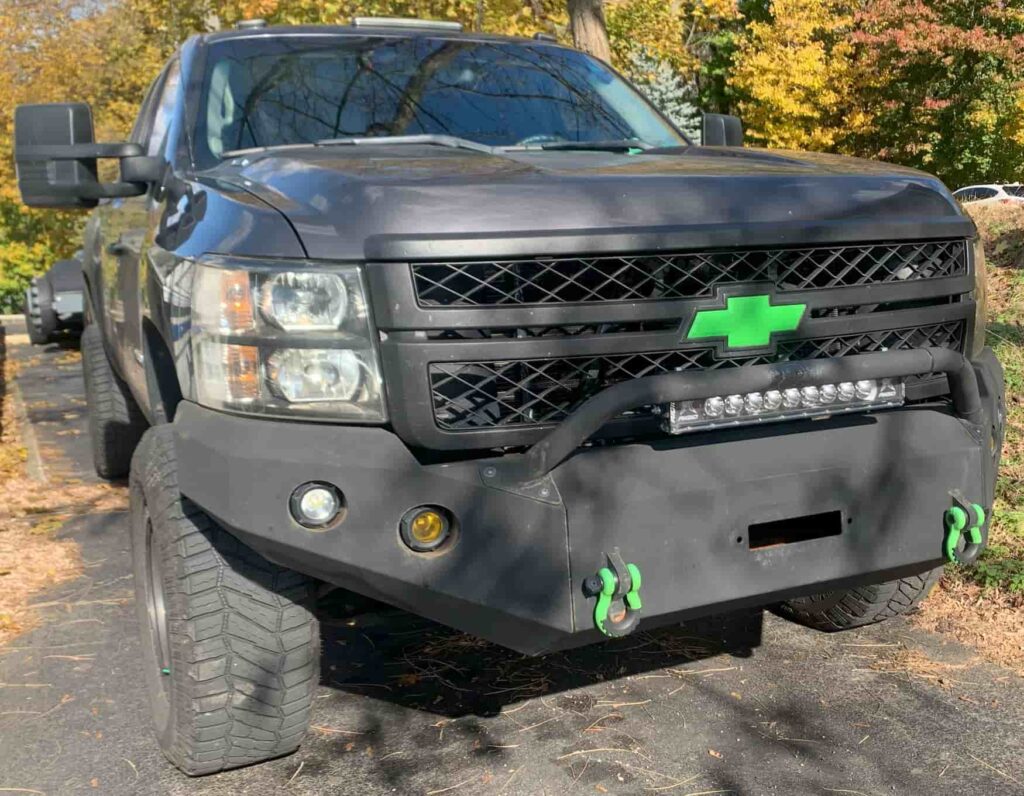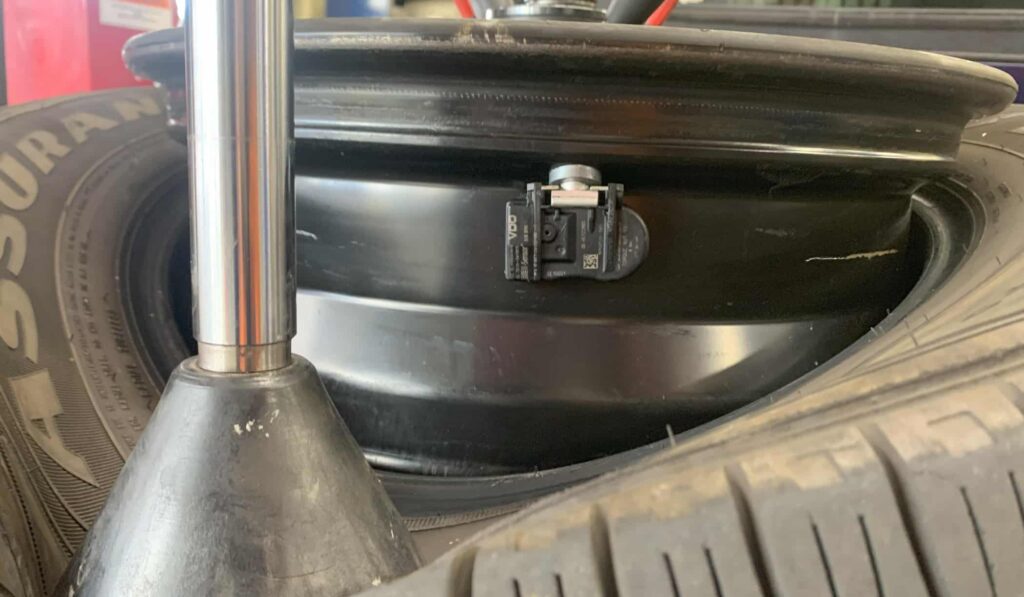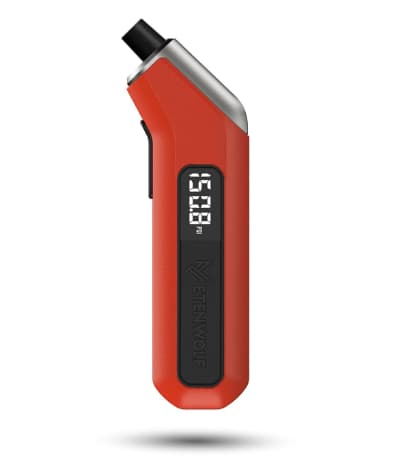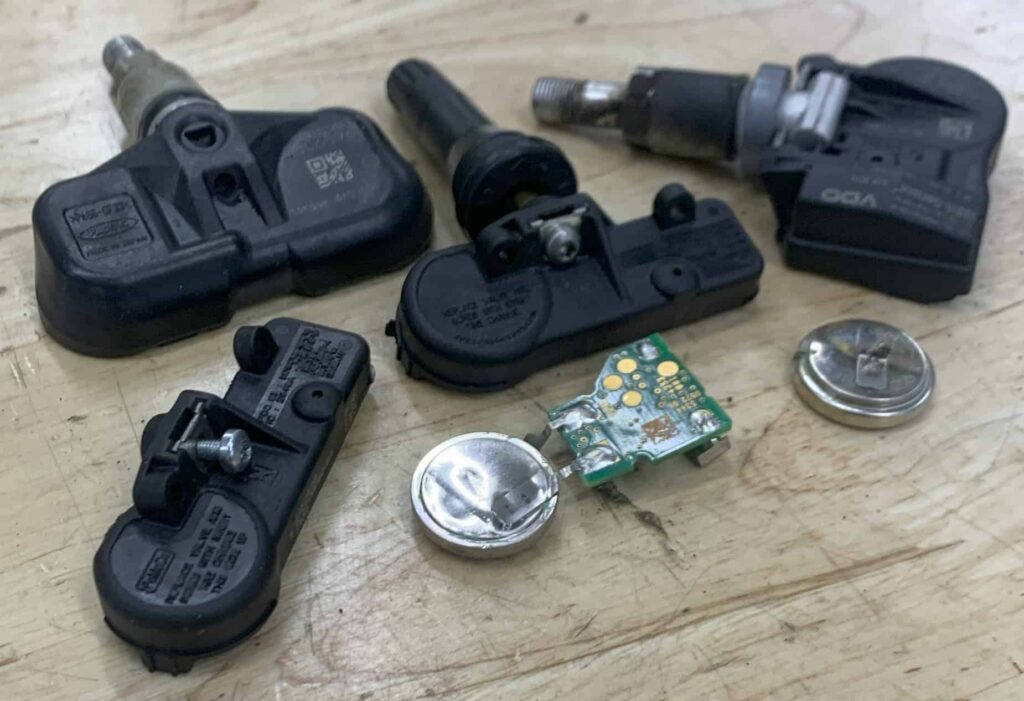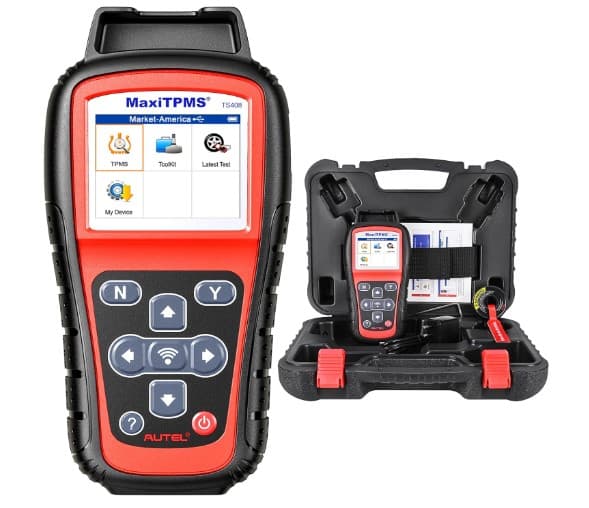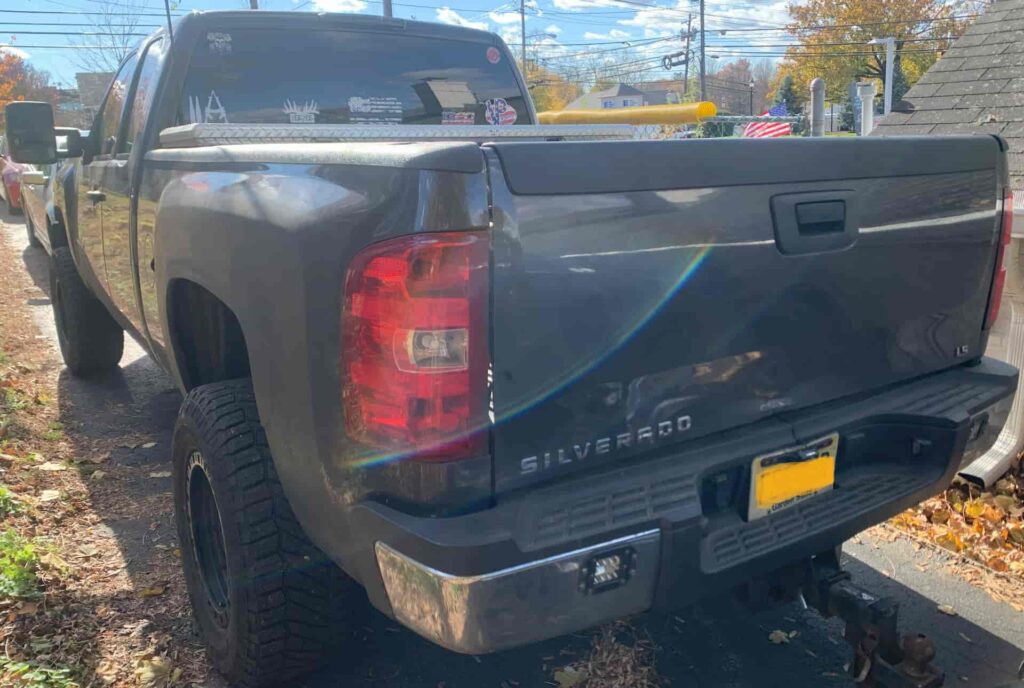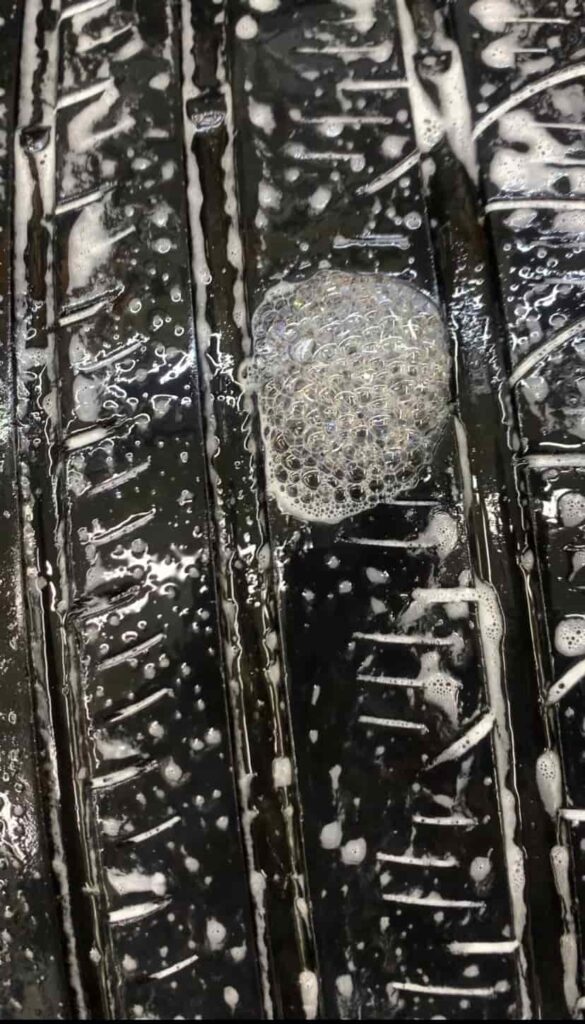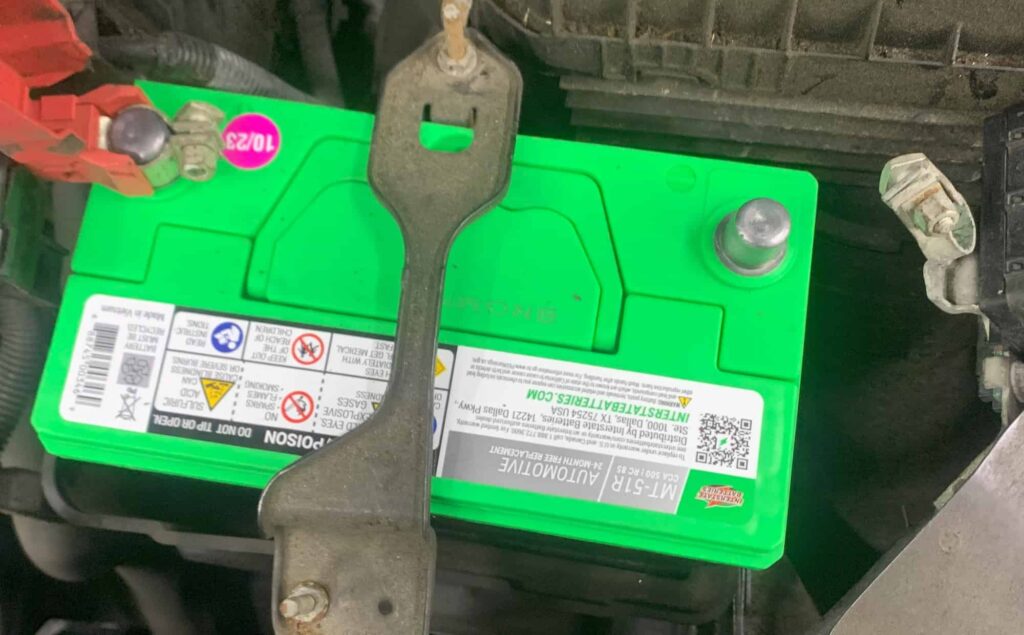Steps to Reset the Chevy Silverado Tire Light
Fill each of the four tires to the suggested pressure levels when cold
Drive the Chevy Silverado at a pace above 25 Mph for a duration of 5 to 10 minutes.
Please be aware that the Chevy Silverado is not equipped with a button to reset tire pressure.
How to Relearn the Chevy Silverado TPMS Without a Tool
Following tire rotation, service, or tire sensor replacement on the Chevy Silverado, initiate the TPMS sensor relearning sequence to update the truck’s system with the new tire positions. Here’s how:
Inflate each tire to 40 Psi.
Turn the ignition to “on” without starting the engine.
Use the dashboard screen to navigate to the “Menu.”
Select “Vehicle Information” and then “Tire Pressure Menu.”
Press and hold the SET/CLR button for a moment.
When asked to confirm the relearn, choose “Yes.”
Await two horn sounds indicating TPMS relearn mode activation, with “TIRE LEARNING ACTIVE” appearing on the display.
Start with the front tire on the driver’s side and release air from the tire until the horn sounds.
Continue with the passenger side front tire, passenger side rear tire, and driver side rear tire, in that order, waiting for the horn to beep after releasing air from each.
After hearing the horn beep for each of the four tires, the relearn process has been completed.
Check the dashboard current tire pressure display to confirm.
Turn the ignition of the truck off and set the tires to the correct pressure.
How to Relearn the Chevy Silverado TPMS With a Tool
Pump up all tires to a pressure of 40 Psi.
Navigate through the Chevy Silverado interface using the steering wheel controls until you see the tire pressure information.
Long-press the trip odometer button situated to the right of the display.
You’ll be prompted with a message asking for confirmation to relearn tire positions; choose “Yes“.
The Chevy Silverado will acknowledge with two beeps of the horn, and “Tire Learning Active” will be displayed on the interface.
At the Silverado’s driver side front wheel, position the TPMS tool directly next to the valve stem and activate it until you hear a single horn chirp.
Repeat this process at the front passenger tire, rear passenger tire, and rear driver’s side tire, in that order.
Confirm the relearn process was successful by viewing the current tire pressure display screen.
Afterward, set the tire pressures back to their proper specifications based on the tire sticker on the driver side door panel.
2023 Chevy Silverado Tire Pressures
TIRE SIZE | FRONT PSI | REAR PSI |
255/70R17 | 35 | 35 |
265/65R18 | 35 | 35 |
265/70R17 | 35 | 35 |
275/60R20 | 35 | 35 |
275/50R22 | 36 | 36 |
What is the Chevy Silverado TPMS?
The TPMS (tire pressure monitoring system) in the Chevy Silverado is a safety feature that continuously measures the current air pressure of each tire. The tire pressure monitoring system consists of 4 tire pressure sensors (1 in each tire), a TPMS receiver module, and the Silverado’s engine control module (ECM).
How Does the Chevy Silverado TPMS Work?
Tire Pressure Monitoring in the Chevy Silverado: Each of the Chevy Silverado’s tires contains a tire pressure sensor. These sensors are concealed within the tires, attached at the base of the valve stems. They are compact devices combining a circuit board, a radio transmitter, and a battery within a plastic enclosure. These sensors are responsible for measuring the tire pressure and transmitting this information to the truck’s TPMS receiver module. Note that the spare tire of the Chevy Silverado lacks this sensor.
TPMS Receiver Module: In the Chevy Silverado, the TPMS receiver module is tasked with receiving tire pressure data from each sensor. It processes and organizes this data before relaying it to the Engine Control Module (ECM) for further analysis.
Engine Control Module (ECM): The ECM serves as the central processing unit of the Chevy Silverado, overseeing various functions including tire pressure monitoring. It compares the received tire pressure data with the ideal pressure levels for the Silverado. If it detects a significant drop in tire pressure, it activates a warning signal for low tire pressure. The warning signal is a yellow exclamation mark on the dashboard.
How to Respond to the Chevy Silverado's Low Tire Pressure Warning
As soon as the low tire pressure indicator on the Chevy Silverado’s dashboard is illuminated, it’s important to find a safe spot to stop. Once parked securely, visually inspect each tire and manually check each tire using a tire pressure gauge. Adjust the air pressure in the tires to meet the suggested levels.
What Triggers the Chevy Silverado Tire Pressure Light?
Tires either underinflated or overinflated
Absence of TPMS sensors in the spare tire
Depleting or malfunctioning batteries in TPMS sensors
Issues with the TPMS receiver module or the Chevy Silverado’s ECM, including software glitches
Disruption from electromagnetic fields produced by nearby vehicles or electronic gadgets
Decrease in air temperature
Exceeding the Chevy Silverado’s maximum load or tow capacity
Utilization of tire chains
Heavy window tinting on the truck
Fluctuations in road temperature
Use of incorrect tire dimensions
Damage to TPMS sensors during tire installation
Failure to reset, relearn, or recalibrate the TPMS following tire replacement or rotation
Why Tire Pressure Adjustments Require Cold Tires
Adjusting tire pressure is most accurate when the tires are cold. Tires reach a cold state if they haven’t been driven for at least 3 hours. It’s important to note that tire pressure guidelines are based on the tires being in this cold state.
How Heat Affects Tire Pressure and Risks of Overinflation
Adjusting the air pressure in tires while they are hot can often result in overinflation, as tire pressure naturally rises with heat. The heat generated by driving, as well as higher ambient air temperatures, contribute to this temporary increase in pressure.
Impact of Altitude Changes on Tire Pressure
Altitude variations can impact tire pressure. Generally, for every increase of 1,000 feet in elevation, there’s an approximate rise of 0.5 psi in tire pressure. So, if a Chevy Silverado ascends from sea level to an altitude of 8,000 feet, its tire pressure could go up by about 4 psi. Usually, such an increase in altitude doesn’t lead to the activation of the low tire pressure warning.
Chevy Silverado Non-Rechargeable Tire Pressure Sensor Batteries
The batteries in the tire pressure sensors of a Chevy Silverado, made of silver oxide, are built-in and non-rechargeable. These batteries, which have a lifespan ranging from 5 to 15 years or a maximum of 150,000 miles, are integrated with the sensor’s circuitry. When their power runs out, the entire sensor must be swapped for a new unit. Once replaced, the sensor will have to be programmed and relearned to the truck’s ECM.
Is it Safe to Drive the Chevy Silverado With the Tire Light On?
It’s advisable to avoid driving the Chevy Silverado when the low tire pressure indicator is illuminated, until you ascertain the cause of the alert. Driving on a deflating tire, which will trigger the light, is unsafe. However, if the light is on due to a depleted tire pressure sensor battery, driving is still safe as the issue is not related to air pressure.
Is There a Mileage Limit After Low Tire Pressure Light Activation?
There isn’t a specific mileage or time limit for safely driving your Chevy Silverado once the low tire pressure indicator is activated. Immediately after the light comes on, it’s important to stop the vehicle, conduct a visual examination of each tire, and measure the air pressure of every tire using a digital tire pressure gauge.
Options for Handling Tire Pressure Sensors With New Wheels or Tires on the Chevy Silverado
Upon installing new wheels or rims on your Chevy Silverado, there are two paths to consider:
Transferring the existing tire pressure sensors to the new wheels.
Fixing new tire pressure sensors on the new wheels and employing a TPMS programming tool to program them with the Chevy Silverado’s ECM.
Additionally, when fitting new tires, it’s necessary to carry out the tire pressure sensor relearn process.
Why is the Chevrolet Silverado Tire Light Flashing?
The self-diagnostic function of the TPMS in the Chevy Silverado is a highly beneficial aspect of the truck. A flashing tire light that subsequently remains lit indicates a communication breakdown between a tire pressure sensor and the Silverado’s ECM or TPMS receiver module, signifying a TPMS malfunction. This issue typically arises due to one of three reasons:
The battery in the tire pressure sensor is low or completely drained
The spare tire, which lacks a pressure sensor, has replaced an OEM tire on the truck
A tire pressure sensor has sustained damage during the installation of a new tire.
Can the Chevy Silverado Tire Pressure Monitoring System Be Disabled?
Taking out the tire pressure sensors from the wheels won’t turn off the tire pressure monitoring system in the Chevy Silverado. Instead, it will lead to a TPMS malfunction, resulting in the low tire warning symbol flashing and then staying lit.
Necessity of a TPMS Diagnostic Tool for Individual Tire Sensor Testing
For individual testing of each tire pressure sensor on the Chevy Silverado, a TPMS diagnostic tool is necessary. I personally use and endorse the Autel TPMS diagnostic tools, which can scan and evaluate each sensor, offering a detailed report on their performance. This report includes information on the sensor’s battery life, signal strength of the transmitter, and the temperature of the tire. Should the report indicate any anomalies, like a low battery or weak signal, the affected sensor should be replaced.
Weather and Temperature Effects on Low Tire Pressure Indicator
Often, the low tire pressure indicator lights up due to shifts in weather and temperature. For every 10°F variation in temperature, there’s a corresponding change of 1 Psi in tire pressure. So, if your Chevy Silverado’s tires are initially at 35 Psi and there’s a 38°F decrease overnight, the tire pressure will likely fall to 31 Psi (a loss of 4 Psi), possibly resulting in the activation of the low tire pressure warning light. Regularly adjusting the air pressure of your Chevy Silverado, especially when the tires are cold will help minimize this issue.
Why is the Tire Light On If the Tires Look Fine?
We recommend not judging your tires based on how they look or by what the information display reads but instead by manually checking each tire’s air pressure with a gauge. If after inflating the tires to the recommended pressure, the low tire light turns off, your TPMS is working properly!
Overinflating Tires as a Solution to TPMS Reset Issues
Should the tire pressure light on your Chevy Silverado remain on after attempting the TPMS reset and tire pressure sensor relearn steps, try inflating your tires an additional 5 Psi beyond the recommended level. For example, if the standard pressure is 35 Psi, boost it to 40 Psi. Drive the truck for several miles at speeds over 25 Mph, then retry the TPMS reset and sensor relearn procedures with the tires still overinflated. Once complete, deflate the tires back to the advised pressure.
Using Soap and Water Solution to Identify Tire Leaks
To locate the precise leak point on a tire, proceed as follows:
Inflate the tire with the leak to 40 Psi.
Prepare a mixture of water and liquid soap in a spray bottle.
Liberally apply this soap and water solution over the tire, ensuring you cover the tire bead and valve stem.
Watch for the formation of bubbles and follow these to identify the leak’s origin.
Clearing Temporary TPMS Codes By Detaching the Battery
If the TPMS reset and sensor relearn processes for the Chevy Silverado fail to extinguish the low tire pressure light, detaching the truck’s primary 12-volt battery can clear any temporary TPMS fault codes from the ECM.
Ensure the engine and all electronic devices (such as the radio and lights) are off.
Loosen and remove the negative battery terminal.
Pause briefly before reattaching and securing the terminal.
Completing these steps should switch off the low tire pressure light. However, if it reactivates while driving, it may indicate a malfunctioning tire pressure sensor or a tire that’s losing air.
Impact of Tire Pressure on Chevy Silverado's Fuel Economy
Maintaining the right tire pressure is essential for optimizing fuel efficiency in the Chevy Silverado. Studies suggest that a vehicle’s fuel economy diminishes by 0.2% for every 1 psi decrease in tire pressure. Given the substantial size and weight of a Silverado, having tires that are 5 psi below the recommended level could result in a 1% reduction in fuel efficiency. Over time, this can lead to considerable additional expenses at the gas station and greater environmental harm through increased CO2 emissions.
The Limitations of Tire Plugs
With many years of experience as an automotive technician, I frequently employ tire plugs to repair tire punctures. They serve as an effective and lasting fix, provided they are not applied to the sidewalls of the tire or on tires with completely worn treads. In cases of particularly large punctures, it’s advisable to either replace the tire or opt for a tire patch instead.
Are Tire Sensors at Risk After Applying Tire Sealants?
Applying tire sealants for fixing a leaky tire can be a suitable temporary fix in urgent situations. However, it’s important to note that many tire sealants are liquid-based and could harm the tire pressure sensor’s circuit board within the tire where the sealant is applied. It’s recommended to get your tire pressure sensors checked following the use of any tire sealant.
Everything in this article is applicable to all Chevrolet Silverado models and versions including the Chevy Silverado HD, Silverado EV, Silverado LT, RST, LT, Trail Boss, LTZ, High Country, ZR2, WT, Silverado HD 2500 HD, 3500 HD.
Please note that this blog post contains Amazon affiliate links. This means that if you make a purchase through one of these links, we at TPMSRESET.COM may earn a small commission at no extra cost to you. We only recommend products that we personally use and believe in. Thank you for supporting us.

